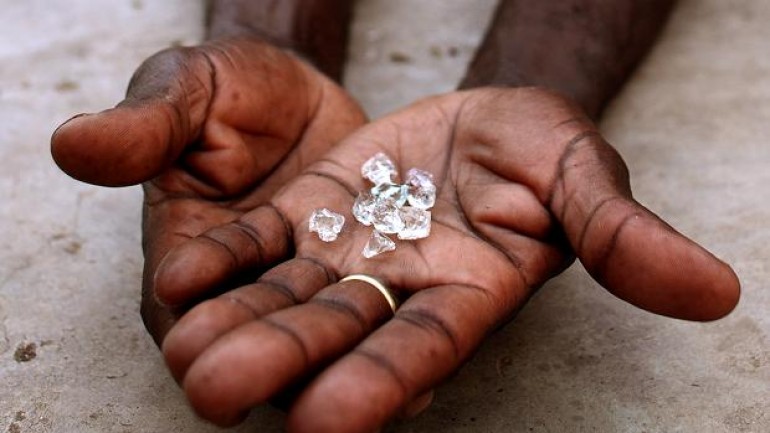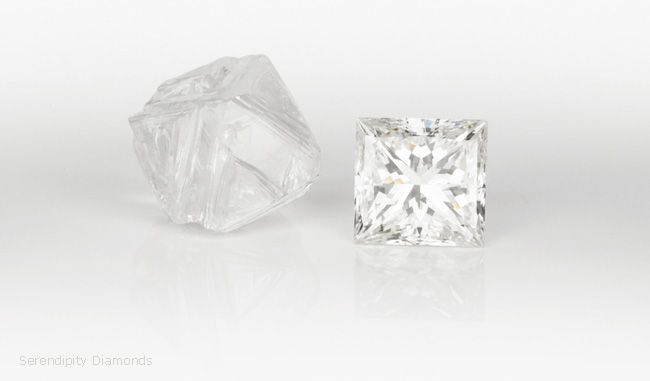
Let’s start off with a little known fact from my neck of the woods;
Russia produces one-third of the world’s mined diamonds.
It’s big business.
As part of the arsenal of sanctions against the Russian economy, Western countries including the USA have placed sanctions and bans on the import of Russian diamonds.
In recent days, international diamond jewellers Tiffany’s, Chopard and Signet have issued statements that they will seize selling any diamonds originating from Russia.
Sounds great, but as you’ll see It’s unfortunately not that simple…
Are Russian diamonds “Conflict Diamonds”? (Blood Diamonds)

“Conflict diamonds” cannot possibly be a phenomenon reserved for poor African countries with bloodthirsty warlords fighting neverending battles.
Alrosa, the largest diamond mining company in Russia by a long shot, and the producer of close to 30% of the world’s mined diamond supply is Russian State-owned.
Alrosa’s income and taxes, therefore, flow directly back into the Kremlin’s state coffers. The very same coffers fueling the brutal war effort in Ukraine.
There’s no way around this; Russian diamond exports are contributing to the funding of the Russian war machine trying its utmost to brutalise the nation of Ukraine and its people.
If we agree that Russian mined diamonds probably help fund the conflict in Ukraine a broad ban on diamonds with a “Russian origin” should fix this, right?
Banning “Russian Origin”-Diamonds Won’t Change A Thing.
Russia mainly exports rough diamonds that are then cut and polished in other countries including India and China.
This is where some international commerce legislation and terms muddy the water.
Once diamonds have undergone “substantial transformation”, the country of origin has now rightfully changed to the country where this raw material underwent this transformation;

So, Russian mined diamonds that were cut and polished in, say, India is legally classified and resold down the economic chain as diamonds of Indian origin.
The same origin dilemma goes for all commodities and raw materials that are processed in countries other than where they’re naturally extracted.
It further complicates things that diamonds are merely crystalised carbon that, apart from a few negligible exceptions, look identical regardless of where they were mined.
As Martin Rapaport, chairman of the Rapaport Group and founder of online diamond trading network RapNet, commented, a ban is “ineffective because there is nothing intrinsic in the diamond itself that would tell you if it was mined in Russia.”
What Are “Guaranteed Conflict Free Diamonds” in 2022?
You’ll still see diamond jewellers’ websites flaunting guarantees about their sale of conflict-free diamonds.
But the supply of conflict diamonds jumped by orders of magnitude on the 24th of February when Russia invaded Ukraine.
Overnight a third of the world’s mined diamond supply moved from the clean to the conflict column.
It’s important to make this information your own.
The diamond world is not all rosy and clear right now.
The Only Diamonds That Can Be Guaranteed To Be Conflict-Free.
Simple: Laboratory-made diamonds.
Laboratory diamonds are 100% real diamonds that are made in a laboratory that in essence just greatly expedites the natural formation of diamonds.
Laboratory diamonds are made in eco-conscious processes, that completely bypass the social and ecological toll of traditional mining.
They’re clean.
Pair this with the fact they cost around 30% of that of a comparable mined diamond and you see why this is widely seen as the future of the diamond world.
You’re not stuck on the sidelines here. You can vote for conflict-free world with your laboratory-grown diamond engagement ring purchase.
Please feel free to send me an email with any questions or quote requests.
Take care.
Johan Poggenpoel
e: johan@poggenpoel.com
